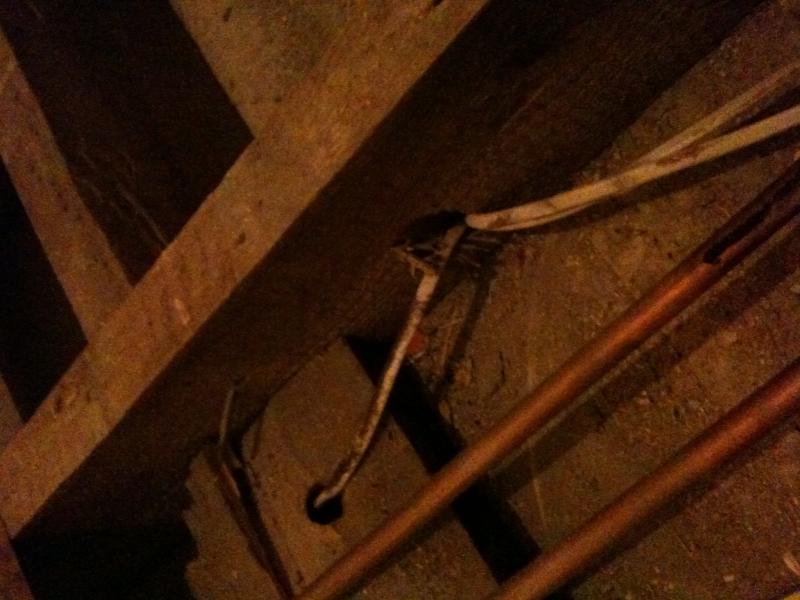Hi,
We’ve got fed up with how easily noise travels between the ground and first floor of our little house so we’ve decided to combine stripping the boards with installing some insulation under them. We’ve gone for rockwool flexi slab (http://guide.rockwool.co.uk/products/building-insulation/flexi.aspx) but I’m not too sure how to protect the cables that run through the joists under the floor. Some I can tack up onto the joists up out of the way. Some I might be able to fit into coving. But, given the how low to the ground many of the holes in the joists are (and that the insulation is 100mm thick), its going to be hard to separate much of cabling from the insulation – I’ve put in a few photos to illustrate what I mean.
I feel like this is something I should be worrying about, but is also the type of thing everyone must have already solved. Any suggestions on what to do would be very welcome!
We’ve got fed up with how easily noise travels between the ground and first floor of our little house so we’ve decided to combine stripping the boards with installing some insulation under them. We’ve gone for rockwool flexi slab (http://guide.rockwool.co.uk/products/building-insulation/flexi.aspx) but I’m not too sure how to protect the cables that run through the joists under the floor. Some I can tack up onto the joists up out of the way. Some I might be able to fit into coving. But, given the how low to the ground many of the holes in the joists are (and that the insulation is 100mm thick), its going to be hard to separate much of cabling from the insulation – I’ve put in a few photos to illustrate what I mean.
I feel like this is something I should be worrying about, but is also the type of thing everyone must have already solved. Any suggestions on what to do would be very welcome!


